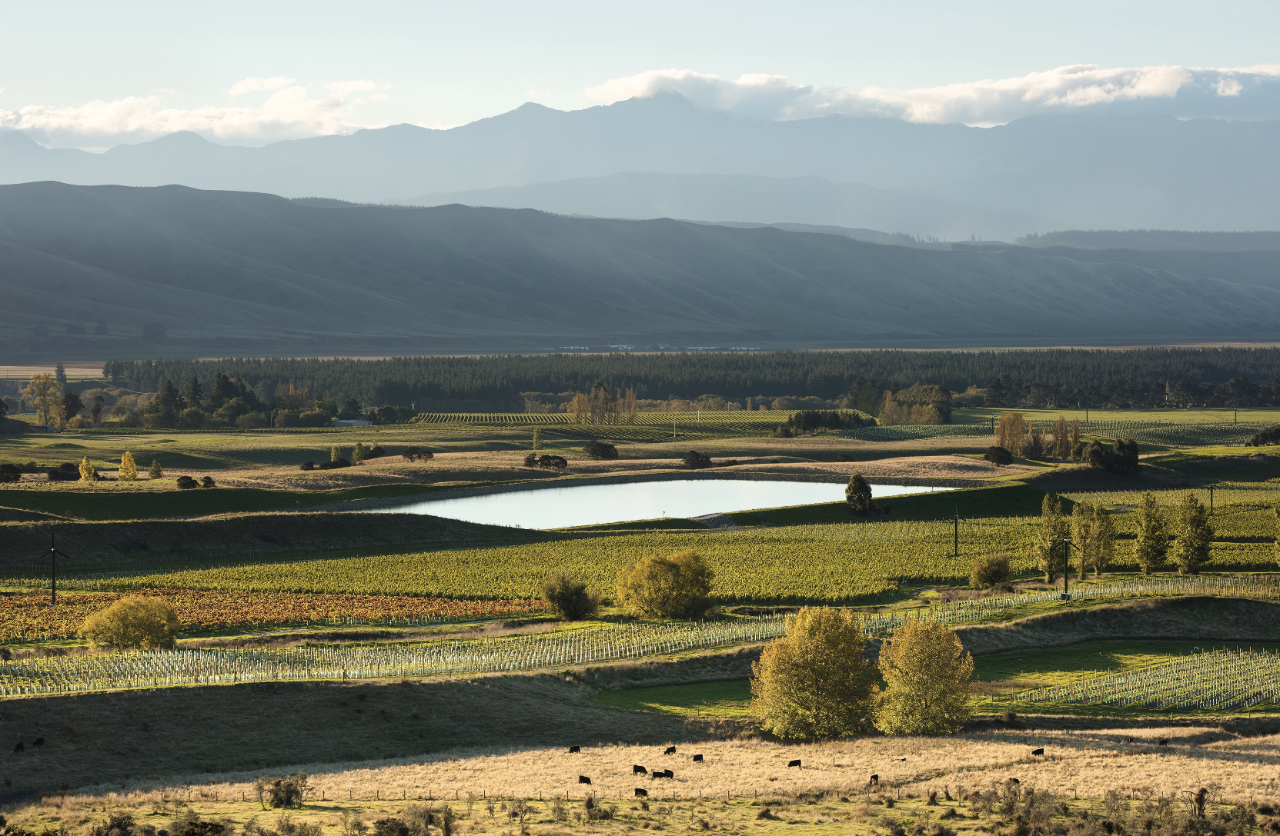Smart water investment produces a rosé result

When the Marlborough District Council restricted water use during this summer’s big dry, grape growers felt it.
Restrictions came right when vines needed water the most. Stakes were high - a 15ha block carrying $375,000 worth of fruit can shed up to 40% of yield - worth $150,000 - if seriously under-watered.
Growers battled through but the result was a 2% drop in grapes harvested.
Marlborough, New Zealand’s largest wine producing region, accounts for almost 75% of the wine we produce. The weak harvest made a significant contribution to the fall in national production.
But one local vineyard dodged the climate bullet.
How one Marlborough vineyard is dealing with a changing climate - download video
Leefield Station, deep in the Waihopai Valley, was exposed to the same dry conditions as everyone else. But smart investment in infrastructure meant the business was much better placed to deal with the rapidly changing climate conditions.
Five years ago, Brent Marris bought a dry, dusty sheep and beef station. Since then, he and his team transformed the farm, planting 750ha of vines.
Sustainability has played a big role in the planning with a focus on “What is the ground going to produce and what is Mother Nature going to produce?”
One of the first considerations was making sure they had enough water.
With council consent and a permit to store water, they built a dam on the property 300m long and 14m deep, capable of holding 330 million litres.
Leefield captures and stores water when rivers are at high flow.
This didn’t come cheap but Marris saw it as an investment rather than a cost. “It means we can sleep at night.”
It also meant while others struggled through the big dry, Leefield had a bumper harvest.
Now there is further investment in the form of a new winery which incorporates solar energy recovery, rain water collection, recycling of waste water for pasture irrigation and spreaders for returning Marc (pressed grape skins) to the farm and vineyard as fertilizer.
Along with nearby Marisco Vineyard, which Marris also owns, the business now employs 90 fulltime and 20 vintage staff across their Marlborough properties with a further 24 fulltime and up to 40 vintage staff planned for the winery under construction.
Beyond the obvious positive economic effects for Marlborough, this story highlights the contribution regional New Zealand makes to the country’s export earnings and broader economic growth.
It also highlights why it’s important for businesses to look at risks and think about how investment in infrastructure can help mitigate those risks.
Building a dam involved a large capital outlay as part of a 20-year plan. But now the whole business is less risky as it helps manage seasonal volatility.
Infrastructure tends to involve high-cost investments, but means businesses and regions are less volatile, more bankable and can attract capital.
Making the right decisions around infrastructure early on is not only good for business, but is good for everyone.
New Zealand plays a big role in feeding the world and it’s something we’re very good at. We have land and water and we invest capital into businesses and infrastructure so we can grow food and export it.
When it comes to the world’s stock of natural assets (geology, soil, air, water) we are very well off. The World Bank estimates we are the 8th wealthiest country in terms of natural capital (on a per capita basis), and the richest when it comes to renewable resources.
Thirteen of New Zealand’s top-20 export commodity earners depend on natural capital, those thirteen commodity earners make up more than 70% of our entire export earnings.
Much of that is generated in the regions where continued sustainable regional growth requires investment in infrastructure.
It is vital to our economic development and prosperity which is why we must address our infrastructure deficit.
So how do we work together to ensure there is a cohesive strategic plan across New Zealand? How do we take an example like smart investment in a dam for water security and the positive ripple effects throughout a business and wider community, and replicate that at scale across the country?
With the cost of borrowing at an all-time low, the time is right for the Government and investors to borrow and invest in infrastructure projects.
We’ve sent a clear message that New Zealand is ‘open for business’ to let would-be investors know we are looking for investment partners. This is key as without private capital and large-scale investment our infrastructure deficit can’t be repaired.
The Government’s Provincial Growth Fund is a positive step for the regions - investing $3 billion over three years with the aim of building a regional economy that is sustainable, inclusive and productive.
A recent announcement that it will invest up to $18.5 million to help investigate and – if feasible – construct community scale water storage and use options in Kaipara and the Mid-North, is a positive move for the drought-prone region. If successful it would unlock land use, create jobs and significantly boost the local economy.
Without initiatives like this the cost falls to ratepayers, and small councils struggle to get the infrastructure investment they need.
Financing private businesses in the regions, like Marisco Vineyards and Leefield Station, to enable investment in long-term sustainable infrastructure projects is also really important.
We should challenge the regions, and New Zealand, to think more like Marisco and invest in infrastructure to not only reduce risk but to drive more sustainable, and ultimately better, outcomes for the country.
Paul Goodwin is Managing Director, Institutional, ANZ New Zealand.